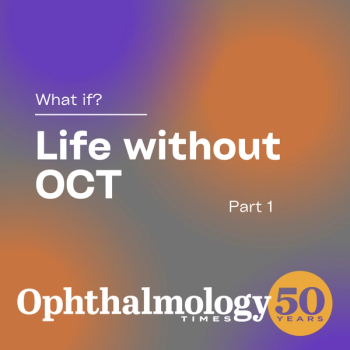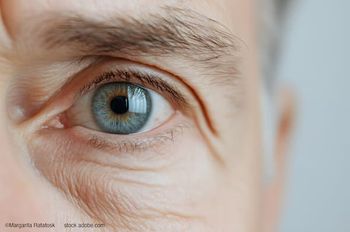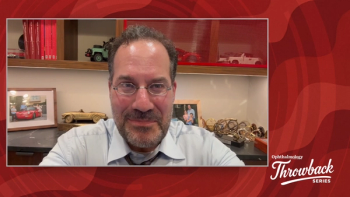
Novel trifocal IOL extends range of vision
A new non-apodized diffractive trifocal IOL allows 88% energy utilization and sends energy to near (40 cm), a preferred intermediate distance (60 cm), and far (infinity). Early results for visual acuity, contrast sensitivity, and photopic symptoms are encouraging.
Take home message: A new non-apodized diffractive trifocal IOL allows 88% energy utilization and sends energy to near (40 cm), a preferred intermediate distance (60 cm), and far (infinity). Early results for visual acuity, contrast sensitivity, and photopic symptoms are encouraging.
By Cheryl Guttman Krader; Reviewed by Rudy M.M.A. Nuijts, MD, PhD, Soraya M.R. Jonker, MD, and Noël J.C. Bauer, MD, PhD
Maastricht, The Netherlands-A new non-apodized diffractive trifocal presbyopia-correcting IOL (AcrySof IQ PanOptix, Alcon Laboratories) is designed to bring patients a full and seamless range of uncorrected vision, including a wide range of comfortable near to intermediate vision (40 to 80 cm) with a crisp focal point at 60 cm.
The new IOL was launched in Europe at the 2015 meeting of the European Society of Cataract and Refractive Surgeons (ESCRS) in Barcelona, Spain, and is not available in the United States.It features patented optical technology (ENLIGHTEN; ENhanced LIGHT ENergy) that redistributes the extended intermediate focal point (120 cm) to the distance focal point for an amplified performance. The novel diffractive optic has two step heights, sends energy to three foci-near (40 cm), a preferred intermediate distance (60 cm) and far (infinity)-regardless of pupil size, and allows 88% energy utilization.
At the ESCRS Congress, Rudy M.M.A. Nuijts, MD, PhD, presented positive early clinical outcomes for a small series of patients with the new trifocal IOL implanted at the University Eye Clinic Maastricht, the Netherlands.
Dr. Nuijts and his colleagues, Soraya M.R. Jonker, MD, and Noël J.C. Bauer, MD, PhD, analyzed the outcomes and put them into perspective by comparing them with historical control groups implanted with another trifocal multifocal IOL (Fine Vision Micro F, Physiol) or a +3.0 D bifocal multifocal IOL (AcrySof IQ ReSTOR +3.0, Alcon Laboratories).
The historical data were from a randomized clinical trial conducted by the same group at the University Eye Clinic Maastricht [Jonker SM, et al. J Cataract Refract Surg. 2015;41:1631-1640].
“At 1 month after surgery, we found that the new trifocal IOL was associated with very good monocular distance corrected visual acuity, and it provided uncorrected and distance corrected intermediate and near visual acuity that compared well to the historical controls,” said Dr. Nuijts, professor of ophthalmology, University Eye Clinic Maastricht, The Netherlands.
“Furthermore, the binocular defocus curve of the new trifocal IOL showed a more continuous range with a probable best intermediate visual acuity of around 50 to 60 cm.”
In addition, contrast sensitivity testing performed in the first group of eyes with the trifocal IOL implanted showed excellent results under photopic and mesopic conditions that were superior to those of the historical controls and even when compared with an age-related phakic control group, he noted.
“Furthermore, the new IOL seemed to be associated with fewer patient complaints of bothersome glare than the other presbyopiacorrecting IOLs,” Dr. Nuijts said.
About the case series
The series with the new trifocal IOL implanted included 16 eyes of 9 patients. The patients had a mean age of about 60 years, mean preoperative corrected distance visual acuity was 0.14 ± 0.24 logMAR, and mean preoperative SE was –0.56 ± 1.71 D.
The defocus curve and distance visual acuity measurements were performed with the ETDRS chart, near and intermediate visual acuity measurements were done using the ETDRS near vision chart, and contrast sensitivity was evaluated using the CSV-1000 (VectorVision).
Visual acuity results for the two historical control groups were based on testing performed at 6 months after surgery, and binocular defocus
curve and contrast sensitivity testing for the controls was done at 3 months after surgery.
The refractive outcomes in eyes with the new trifocal IOL implanted were very good-mean SE at 1 month after surgery was ¬0.04 ± 0.45 D. Mean logMAR values for uncorrected distance, intermediate, and near visual acuity were 0.15 ± 0.14, 0.23 ± 0.14, and 0.28 ± 0.14, respectively; mean distance corrected distance, intermediate, and near visual acuity were –0.02 ± 0.15, 0.24 ± 0.17, and 0.18 ± 0.15, respectively.
In defocus testing, the new IOL provided visual acuity of 0.2 logMAR or better from +1.0 D to –3.0 D defocus. While the two historical presbyopia-correcting IOLs also provided a good range of vision, the results with the PanOptix IOL were more continuous with the new trifocal.
Rudy M.M.A. Nuijta, MD, PhD
Dr. Nuijts is a consultant to Alcon Laboratories and receives lecture fees and study grant support from Alcon. He is a consultant to Thea Pharma and ASICO, and received study grants from AcuFocus, Alcon Surgical, Carl Zeiss Meditec, Ophtec, and Physiol.
Soraya M.R. Jonker, MD
Dr. Jonker has no Ç nancial or proprietary interest in any material or method mentioned.
Noël J.C. Bauer, MD, PhD
Dr. Bauer received study grants from Alcon Laboratories, Carl Zeiss Meditec, and Physiol and a lecture fee from Alcon Surgical.
Newsletter
Don’t miss out—get Ophthalmology Times updates on the latest clinical advancements and expert interviews, straight to your inbox.


















































.png)


